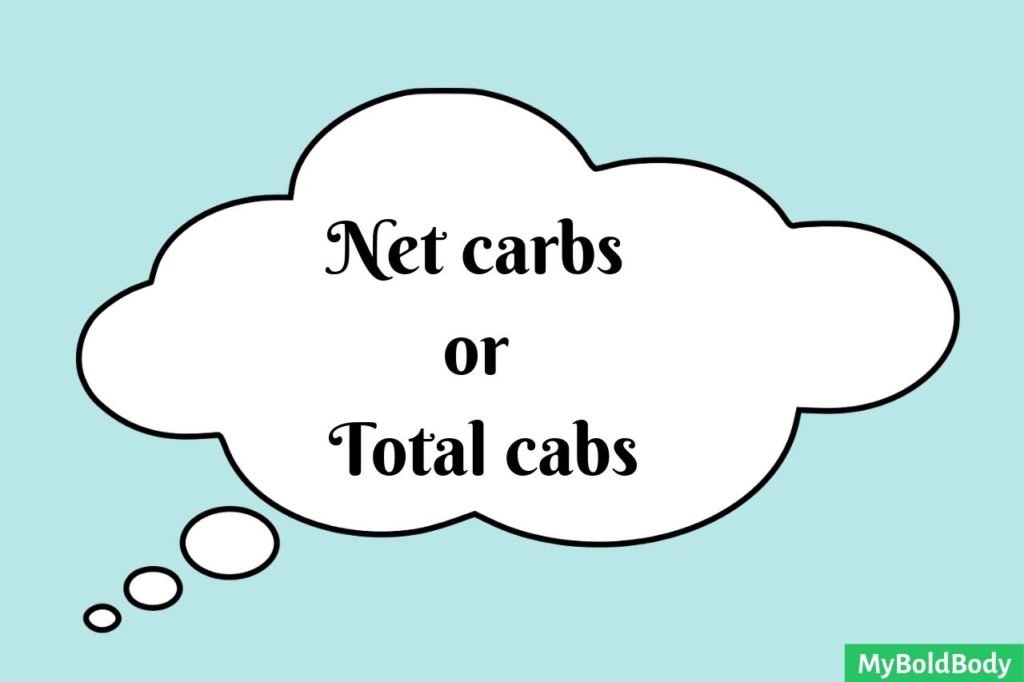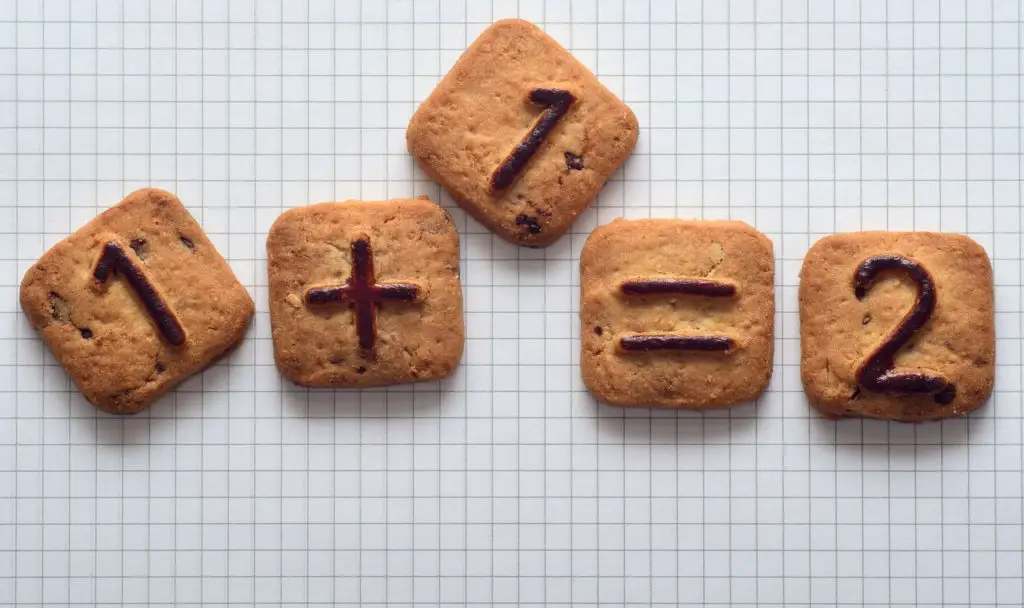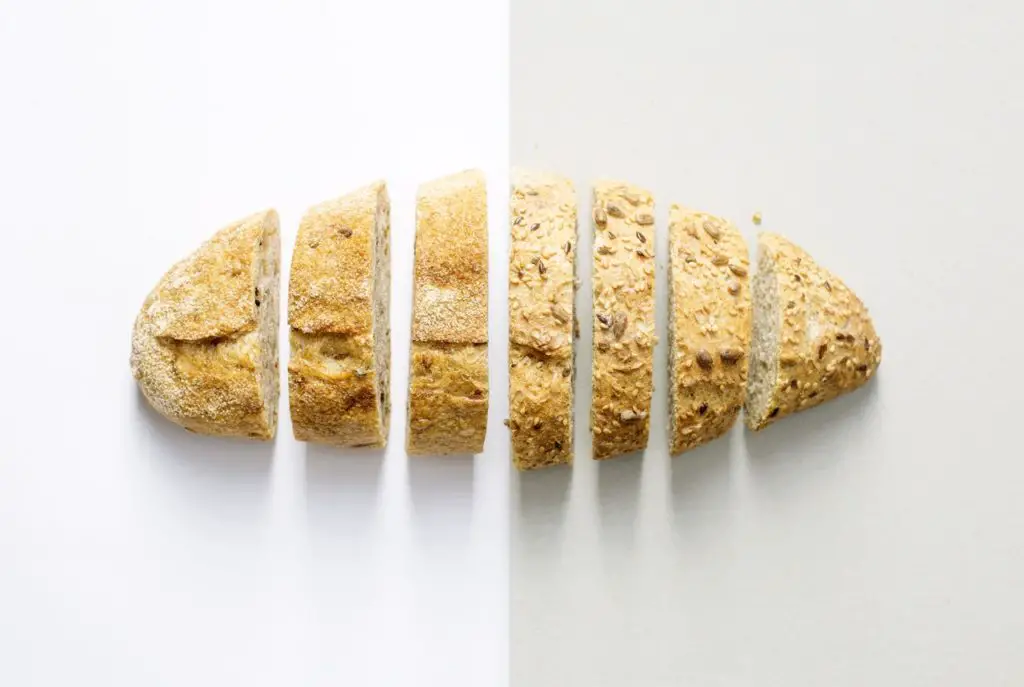This post may contain affiliate links. For more info, please read our full disclosure here
Carbohydrates play an essential role when it comes to the ketogenic diet. The amount of carbs you consume on keto is quite important. To enter and maintain the metabolic state of ketosis, you need to reduce your daily carb intake to a certain point.
Too much carbs will throw you off ketosis, but also, you still want to be getting some carbs from your meals. In order to be able to properly maintain ketosis, you need to determine your keto carbs limit and stick to it.
This guide explains the role of carbs on the keto diet, how much to eat, how to determine your daily carb limit for ketosis and the best ways to track it. Let’s dive in
Understanding the role of carbs on the keto diet

Carbohydrates play a very important role in your body. They are the primary source of energy for a person not in ketosis, and also the cheapest source of fuel for the human body in general.
When you eat foods containing carbohydrates, they are broken into glucose which triggers the release of insulin. Insulin signals your cells to either use the glucose for energy or store them for later use (as fat).
On the keto diet, fats serve as your primary source of energy, rather than carbs. But both seem to be related in some way. Fats are broken down into ketones which your body uses as its alternative fuel source instead of glucose.
When your body can utilize ketones to meet its energy needs, you are said to be in ketosis. But here’s the thing.
In the presence of carbs and fats, your body will naturally pick carbs to meet its energy needs rather than fats. This is because carbohydrates are the cheapest source of energy for the body. Although that doesn’t mean they are the most efficient.
So what does this all mean? It means to be able to enter and maintain the state of ketosis, you need to reduce your carb intake to a certain point where your body can then utilize ketones, gotten from fats for energy.
This is the whole point of the ketogenic diet.
The keto diet carb limit

On keto, you need to limit your carb intake to a certain point to properly allow for ketone production. Based on the keto macronutrient ratios, carbs are meant to make up only about 5 – 10 percent of your daily caloric intake for ketosis to be possible.
Depending on how many calories you are meant to consume on average, this usually represents about 30 – 35g of net carbs and 45 – 50g of total carbs per day for the standard ketogenic diet (SKD) (more on net carbs and total carbs below).
There are three main variations of the keto diet with different carb requirements based mainly on activity levels
- The Standard ketogenic diet (SKD) – this is the most common variation of keto for the average person. It involves sticking to about 30 – 35g of net carbs per day.
- The Targeted ketogenic diet (TKD) – this is quite similar to the standard ketogenic diet, but allows you to take more carbs before a workout to aid your body’s glycogen stores.
- The Cyclical ketogenic diet (CKD) – this is basically for athletes because it allows them to have high carb days to have enough glycogen to burn during activities
The average non-athlete follows the standard ketogenic diet (SKD) and it is the most popular.
Some people are able to go a bit higher with no negative effect on ketosis while other people might need to go a bit lower to be able to maintain ketosis. But why is this? Well, we can’t say for sure.
But here’s what we think. Apart from the fact that our bodies work at different rates, depending on how active you are, you may be able to tolerate a higher daily carb intake than someone who is more sedentary.
Net carbs vs total carbs – what matters more?

You’ll probably hear the terms “net carbs” and “total carbs” a lot on keto. That is because when it comes to ketosis and determining your keto carbs limit, all carbs are not equal.
Total carbs, as the name implies signifies the total carb content of a food product, meal or ingredient. Meaning it shows the total amount of carbs in that food.
Net carbs on the other hand, refers to the total amount of carbohydrates in a food or meal, but minus the fiber content.
Total carbs = total amount of carbohydrates in a food product
Net carbs = total carbs – fiber
When buying groceries or tracking and counting carbs, you’ll basically need to keep a bigger eye on net carbs, meaning, subtract the fiber content from the total carbs.
This is because fiber is not readily digested by your body, but rather adds to the bulk of your faeces, so it has very negligible effect on ketosis. So when it comes to your keto carbs limit, I’m talking about net carbs.
How to determine your keto carbs limit
Your keto carbs limit is basically the highest amount of carbs you can eat per day without falling off ketosis. It’s important to know it and stick to it. There are 2 main ways we recommend finding out your ideal carb intake on keto
- By using a keto calculator
- The carb-ketosis observation method
A keto calculator

This is a pretty effective way to get started and know how much carbs you need to consume daily for ketosis. If you are just starting out on keto or are not too sure about your carb limit, a keto calculator will help you out.
A keto diet calculator shows you the required amount of each macronutrient (carbs, fats and protein) you need to consume based on your age, weight, gender and activity levels among others.
So by using it, you get to know how many carbs to consume daily for ketosis. Here’s how to do it
- find a keto calculator
- Put in your information (age, gender, weight etc.)
- Hit calculate
Simple as that. Most keto calculators lets you choose from a range of values for your carb limit and then works to adjust the other macros to best fit your goals.
Here is a keto diet calculator we recommend.
The carb-ketosis observation method

If you prefer a more personal approach to determining your ideal carb intake on keto, this method could work for you. It’s more like an additional step to the keto calculator. Here’s how it works.
You start by following the recommended keto macronutrient ratios, which, in terms of carbs, relates to about 30g of net carbs per day. Then, you gradually increase your carb intake for a specific period of time while measuring your ketone levels.
The goal of this is to observe what point your ketone levels start going down. For example, you could start at 25g of net carbs per day and slowly increase your carb intake by 3g over 3 to 5days while measuring your ketone levels.
The point where your ketone levels start declining out of ketosis is your carb limit.
When doing this, it’s important to make sure that you are getting the required and proper amounts of each of the other macronutrients (fats and protein) already.
If you’re just starting out with the keto diet, it would be best to stick with the keto calculator. But if you’ve spent a couple of months on the keto diet and want to recalculate your keto carbs limit, you can give this a shot.
This method is a little less accurate but it allows you to kind of test things for yourself.
Usually after some time on keto, some people may find it easier to maintain ketosis with a slightly higher carb intake than a keto newbie. So this method helps you test things a bit.
Now that you know how to determine your keto carbs limit, what steps can you take to make sure you don’t go above it?
How to stick to your carbs limit on the keto diet

Knowing your daily carbs limit on the keto diet is one thing, and sticking to it is quite another. Even with the standard 30 or 35g of net carbs per day limit, some people still find it hard to stick to it and find themselves falling off ketosis regularly.
Here are some simple ways that can help you stick to your keto carbs limit.
Track your carbs
Carb tracking is one of the best ways to make sure you are not going over the recommended amount of carbs for the day. Simple and efficient carb tracking allows you to note down the carb content of each meal or snack you have throughout the day.
That way, you get to be more mindful of what you eat and how you eat and then take the necessary steps to ensure that your meals fit your goals. Tracking carbs is a simple and efficient way to help you maintain ketosis easier.
You can track your daily carb intake using carb tracking apps like myfitnesspal and cronometer. These apps show you the carb content of your food items, making it easier for you to make decisions that will favour ketosis for you.
Also, our free keto meal planner is an excellent way to keep track of your daily carb intake. It allows you set weekly carb goals and record the carb content of your daily meals so you can make comparisons and necessary changes.
The keto meal planner is included amongst our other free keto resources. Get it here.
Follow a meal plan
Why bother doing all the hard work when you can have the work done for you? A well-structured meal plan does just that.
Instead of worrying about the best meals to eat to stay in ketosis, a good meal plan provides a wide variety of healthy and satisfying meals for you, designed to help you hit your macronutrient goals and still maintain ketosis.
Rather than worrying if a particular meal or snack might be too high in carbs, you can use a simple meal plan that takes all the guesswork away. Plus, meal plans tend to be very effective strategies when it comes to losing weight on the keto diet.
There are a couple of good meal plans we highly recommend. You can check them out in our keto diet recommendations.
Your keto carbs limit – important tips to note

- Snack carefully – excessive snacking can make it harder to stay below your carb limit and remain in ketosis. If you are struggling with eating too much carbs, you might need to check how often you snack.
- Watch out for hidden carbs – a lot of processed foods nowadays contain hidden carbs which can add up, push you over your daily carb limit and negatively affect ketone production. Always remember to check the labels for hidden carbs when buying processed foods at the store.
- Don’t stress it too much – I know this may seem a little contrary to everything I’ve said so far. But my point is, try to avoid stressing over carbs too much. Yes try to make sure you maintain ketosis, but aim to make it happen more naturally and not like a military exercise or something. That’s what makes keto enjoyable
Summing it all up
To reap the full benefits of the keto diet, you need to be in ketosis. The amount of carbs you consume on the keto diet will determine if you will be in ketosis or not.
Your keto carbs limit shows you the amount of carbs you need to eat per day to be able to maintain ketosis. Knowing and sticking to your carb limit will definitely help you. There are 2 main ways you can determine your carb limit on the keto diet
- Using a keto calculator
- Using the carb ketosis observation method
The keto calculator is the easiest way to determine your daily carb limit for ketosis. It tells you the ideal amount of each macronutrient (carbohydrates, protein and fats) you need to consume based on your body, and lifestyle.
The carb-ketosis observation method is a little bit more advanced and lets you test things out a little.
By tracking your daily carb consumption or following a meal plan, it becomes way easier to stick to your daily carb limit on keto.
Also remember to watch out for hidden carbs in processed foods as they can affect ketosis. All in all, don’t stress too much over carbs, but rather try to make it happen more naturally. Eat right and enjoy the keto diet to the fullest.
If you loved this article, feel free to share it with your friends. Also check out our free keto resources and keto diet recommendation to help you out with everything you need to succeed on keto.
Keto Meal Plans That Make Fat Burning Easier

